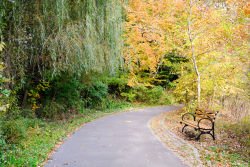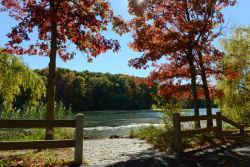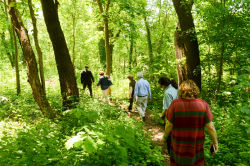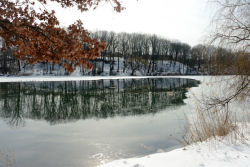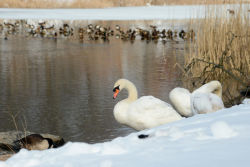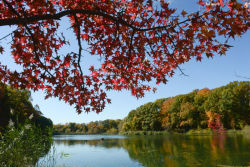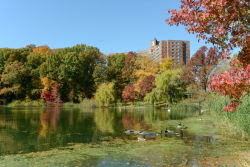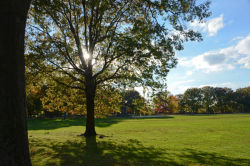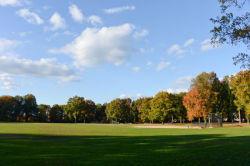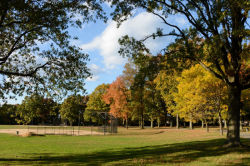Alley Pond Park
John Riedl Wildflower Meadow
This feature of Alley Pond Park is named for Dr. John O. Riedl (1905–1992), who worked in the 1960s to preserve the park’s saltwater and freshwater marshes. Dr. Riedl led the effort to acquire parcels on both sides of Northern Boulevard and rehabilitate these long-neglected marshes.
Dr. Riedl was a Dean and Professor of Philosophy at nearby Queensborough Community College, chairman of the Alley Restoration Committee, and a member of the Udalls Cove Preservation Committee, the Council on the Environment of New York City, and the State Northeastern Queens Nature and Historical Preserve Commission.
The city acquired the land that makes up the 655.29-acre Alley Pond Park over the course of many years between 1927 and the present, until Alley Pond Park became the second-largest park in Queens. The park lies on a glacial moraine, a ridge of sand and rock that formed 15,000 years ago. The glacier -- which dropped the boulders that sit on the hillsides of the park’s southern end -- also left buried chunks of ice that melted and formed the ponds dispersed throughout “the alley,” the 150-acre strip of wetlands in the north end of the park. Fresh water drains into the alley from the hills and bubbles up from natural springs, mixing with the salt water from Little Neck Bay. As a result, the park is host to freshwater and saltwater wetlands, tidal flats, meadows, and forests, making for a diverse ecosystem which supports abundant bird life.
In his zeal to convert the area for recreational uses, and through the construction of the Long Island Expressway and Cross Island Parkway in the 1930s, Parks Commissioner Robert Moses filled in much of the marshland which now is recognized as a vital link in nature’s ecosystem. In 1941, officials from the city’s Sanitation and Health Departments worked with laborers from the Federal Works Project Administration to fill in wetlands in an attempt to control the mosquito population. Three thousand men were put to work at nine sites in Queens laying pipe, digging drainage ditches, and filling in and grading low areas, destroying much fragile marshland.
In the 1960s, community groups, citing Alley Pond’s rich environmental treasures, started a campaign to preserve and restore the remaining undeveloped areas of Alley Pond Park.
In 1969, 2,000 people participated in a “Walk in the Alley,” led by the Alley Restoration Committee. The group, chaired by Dr. Riedl, met with Parks Commissioner August Heckscher (1913–1997) and secured a commitment from Parks to speed up plans to rehabilitate the area. Thanks to the effort of activists like Riedl, Parks created the Wetlands Reclamation Project and began rehabilitating the park’s natural wetlands in 1974.
In 1994, this section of the park was named for Riedl by Commissioner Stern. The John Riedl Wildflower Meadow along Northern Boulevard is planted with ox-eyed daisies (Leucanthemum vulgare), grey birch (Betula populifolia), and pitch pine (Pinus clausa) as well as other wildflowers and trees. The meadow was designed by Parks’s Natural Resources Group and funded by the State Department of Transportation, at the urging of State Senator Frank Padavan. At the dedication, Senator Padavan noted that if it were not for Riedl’s efforts, “the meadow would still be a junkyard.”
One of the many wonderful natural features in Alley Pond Park, the John Riedl Wildflower Meadow is a fitting tribute to a local hero who fought for this beautiful site.
Check out your park's Vital Signs
Clean & Safe
Green & Resilient
Empowered & Engaged Users
Share your feedback or learn more about how this park is part of a
Vital Park System

